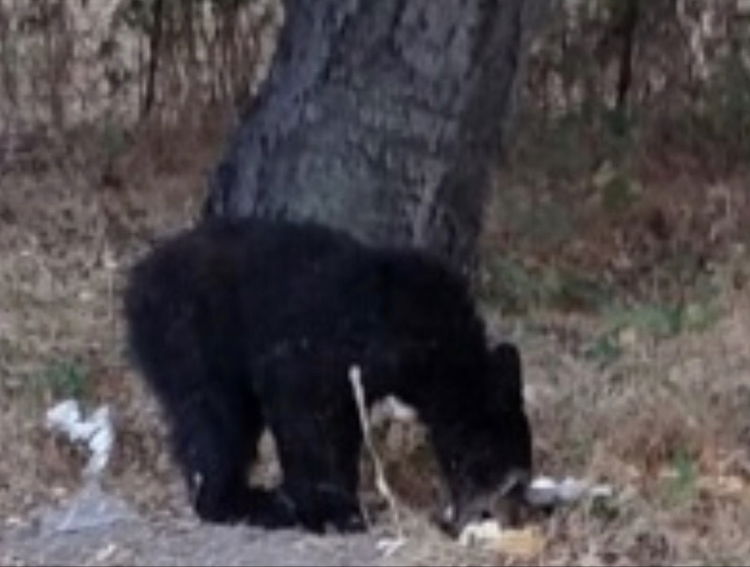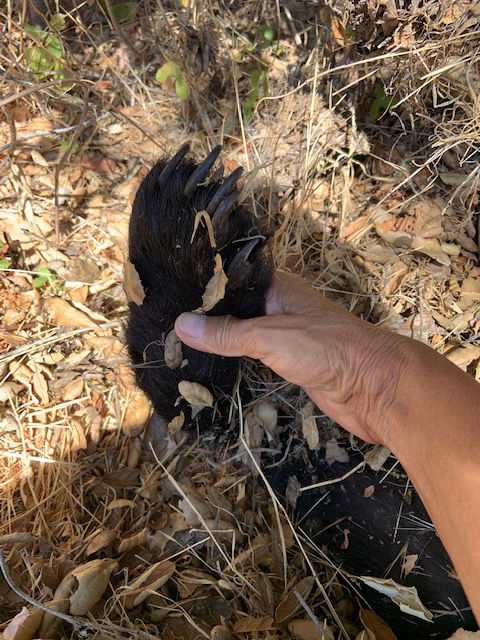Black bear cub hit by car off Hwy 154 near Cachuma Lake
SANTA BARBARA COUNTY, Calif. - Motorists first began noticing the small black bear cub last month. It was scrambling just off the side of the road along a narrow stretch of Hwy 154, a ways from the entrance to Cachuma Lake.
Those who began to see it "crossing back and forth" during their daily commute believed it was orphaned. At one point, several motorists pulled over to the side of the road for an entire hour, warning other drivers about its presence.
Some people left food for the cub.
Concern grew quickly that the situation was not only dangerous for the cub but for drivers and the ensuing traffic jams this was causing.
One local woman named Cynthia reached out to the NewsChannel. She said last Friday, the cub wandered dangerously close to the road and was staying put. Calls were made to 911, Fish and Wildlife, the Department of Forestry and wildlife groups, including Santa Barbara Wildlife Care Network and the Animal Rescue Team.

Black Bear cub off Hwy 154, Aug. 2 (Credit: Animal Rescue Team)
Julia DiSieno, Executive Director of Animal Rescue Team in Solvang, said she responded to several calls about the cub, headed over and tried to capture the animal. (She said there was a licensed facility in Lake Tahoe willing to take it in.) DiSieno said at one point, the bear walked right up to her before running off. She described it as "emaciated" weighing maybe 35 pounds at the most.
Lt. Jamie Dostal with the CA Dept. of Fish and Wildlife estimated the cub weighed more, between 50 and 60 pounds.
Dostal confirmed to NewsChannel that the agency received a number of calls and one of their officers responded to the area Friday night, about 8:00 p.m. A CHP officer and other motorists were parked nearby in a pull-out as cars sped by.
Dostal said it was getting dark; there was no sign of the cub, despite a search of the area.

Remains of Black Bear cub, Aug. 30 (Credit: Animal Rescue Team)
Sadly, sometime Sunday, the cub was hit and killed.
Dostal said he was not initially aware that people were leaving food in the area. He added that a number of factors led to the decision not to track down, tranquilize and capture the cub.
"Within our Black Bear policy we have a cut off date of August 1 for cubs. And, if a cub is found to be potentially orphaned after August 1, our department's determined that that is a timeframe for which the cub should be able to survive on their own, without the mother," Dostal said in a Zoom interview.
Dostal explained that the only time Fish and Wildlife officers will intervene is if a cub (or another wild animal) is wounded or there are other "extenuating" circumstances.
We asked Dostal if the highway itself was an extenuating circumstance.
"Yeah, it adds a little bit to it but overall, the overall area there on both sides of the highway, it's great bear habitat," Dostal said. "A lot of bears live in the area. And that is just one of the things that wildlife has to deal with today with all of our highways throughout the country, you know, cars driving fast, curvy roads, that's something that they, to survive, they've got to figure out."
Dostal said there was a similar situation years ago in San Luis Obispo County on the Cuesta Grade. A motorist picked up a bear cub off the road and took it to a rehabilitation center. It turned out, that particular cub was blind and likely abandoned by its mother.
In this case, the act of leaving food for the cub along Hwy 154 may have inadvertently lured it away from its mother and, ultimately, contributed to its death.
DiSieno was distraught after learning of the cub's death. She said she has frequently shared a message with the public over the years.
"Do not ever feed or water native wildlife. Water is OK during fire disasters, everyone approves of that. And put a lid on your trash can."
A scientist will collect DNA samples from the carcass Friday, which will be added to a database. That information could determined if the cub was healthy or diseased.
In the meantime, the cub remains where it took its last breath.
"It's in an area where it's not easily seen and right now it's basically returning to nature," Dostal said.
For more information about the CA Dept. of Fish & Wildlife, click here.
For more information about the Animal Rescue Team, click here.
